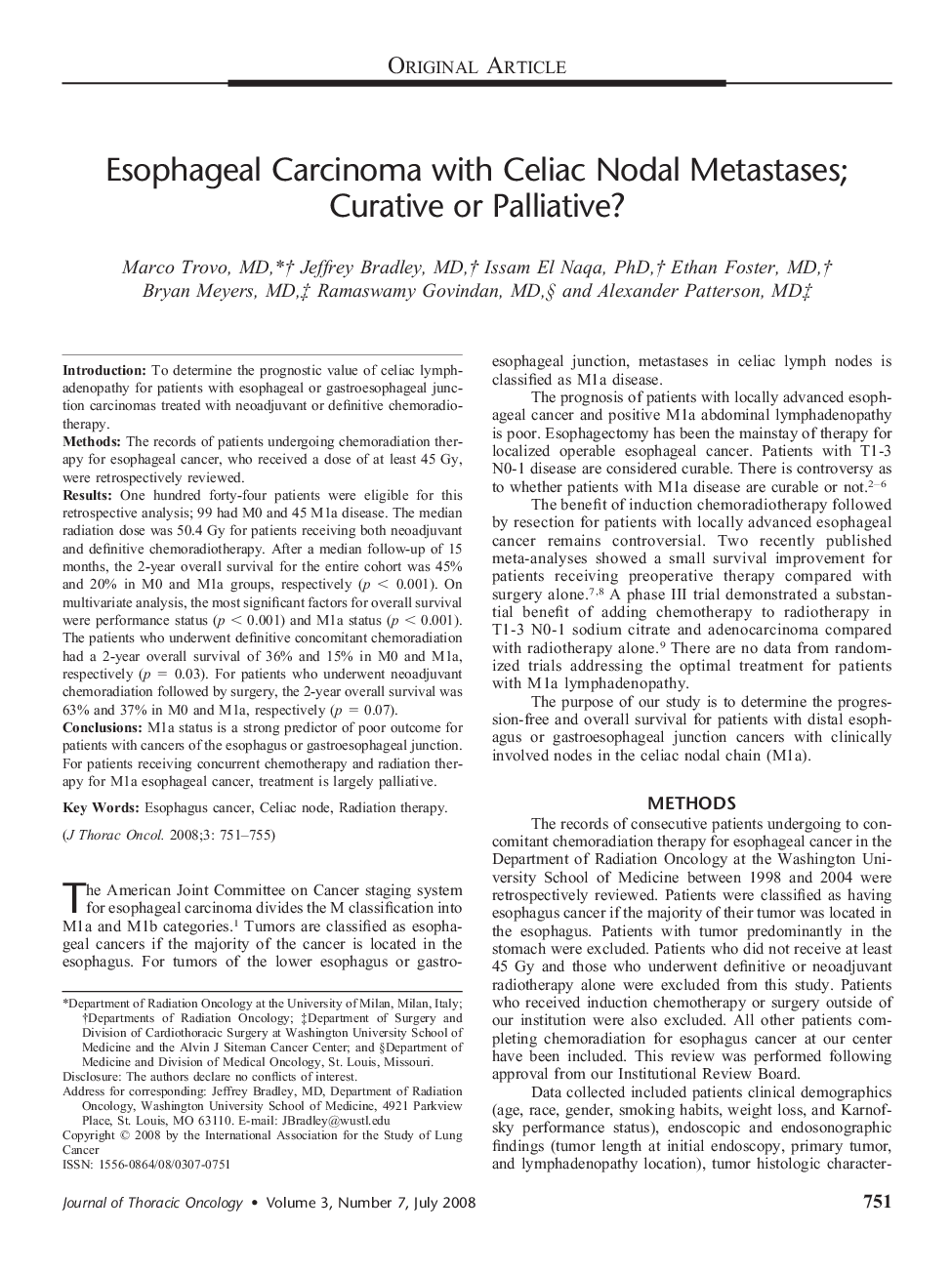| Article ID | Journal | Published Year | Pages | File Type |
|---|---|---|---|---|
| 3992495 | Journal of Thoracic Oncology | 2008 | 5 Pages |
IntroductionTo determine the prognostic value of celiac lymphadenopathy for patients with esophageal or gastroesophageal junction carcinomas treated with neoadjuvant or definitive chemoradiotherapy.MethodsThe records of patients undergoing chemoradiation therapy for esophageal cancer, who received a dose of at least 45 Gy, were retrospectively reviewed.ResultsOne hundred forty-four patients were eligible for this retrospective analysis; 99 had M0 and 45 M1a disease. The median radiation dose was 50.4 Gy for patients receiving both neoadjuvant and definitive chemoradiotherapy. After a median follow-up of 15 months, the 2-year overall survival for the entire cohort was 45% and 20% in M0 and M1a groups, respectively (p < 0.001). On multivariate analysis, the most significant factors for overall survival were performance status (p < 0.001) and M1a status (p < 0.001). The patients who underwent definitive concomitant chemoradiation had a 2-year overall survival of 36% and 15% in M0 and M1a, respectively (p = 0.03). For patients who underwent neoadjuvant chemoradiation followed by surgery, the 2-year overall survival was 63% and 37% in M0 and M1a, respectively (p = 0.07).ConclusionsM1a status is a strong predictor of poor outcome for patients with cancers of the esophagus or gastroesophageal junction. For patients receiving concurrent chemotherapy and radiation therapy for M1a esophageal cancer, treatment is largely palliative.
